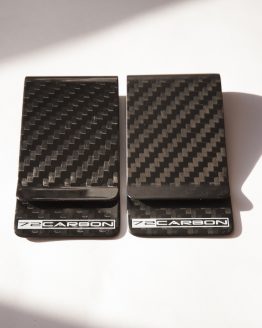-
Choose the Right Carbon Fiber Wrapping Material
The first step in wrapping your car in carbon fiber wrap is to choose the right material. There are a variety of carbon fiber wraps on the market, so it’s important to select one that will work best for your car. If you’re not sure which wrap to choose, consult with a professional or someone who has experience wrapping cars.
One tip that we’ve found to be important, is simply to use a high quality wrap. High quality wraps typically last longer, are more durable, look more realistic, and have features like air channels to make removing air bubbles that get trapped under the wrap, much easier.
-
Prepare the Surface(s) That You Will Be Applying the Wrap To
Once you’ve chosen the right wrap, the next step is to prepare the surface of your car. This includes cleaning the car and making sure that there are no areas that are damaged or uneven. If there are any areas that need to be repaired, do so before you begin wrapping the car.
Many auto-wrapping professionals clean the surface with an alcohol mix depending on the car and the specific surface on the car. But, generally speaking, something that can take off any grease or wax, or anything that may inhibit the carbon fiber wrap from properly sticking to the surfaces of the vehicle, without damaging the paint or surface of the vehicle, is ideal.
-
Apply the Wrap to the Vehicle
Once the surface of your car is prepared, you can begin applying the wrap. Start by applying the wrap to one side of the car and then working your way around. Be sure to smooth out any wrinkles or bubbles as you go.
Be sure to understand the material you’re using and how much heat it can take. Heat can help you wrap the car, but too much of it can damage and deform the material. With a wrap like carbon fiber, you can’t stretch it very much as it will throw the pattern off and make the finished product look very badly and can change the color of the wrap drastically, so be extremely careful when using any sort of heat.
-
Trim the Wrap
Once you’ve applied the wrap to all sides of the car, use a sharp knife or scissors to trim off any excess material.
Be careful not to cut into the paint of your car while you’re doing this. They make specific blades that are designed for this exactly. But, even with those blades you have to know what you’re doing and have a feel cutting. Otherwise, you may cut to deep and cut into the paint of the vehicle, which is definitely not something you want to do.
-
Seal Any Edges or Corners
Once you have the wrap pretty much installed and trimmed, take your time and be keen on looking at all of the edges and corners to make sure they are properly adhered to the car. Having an edge that is coming off can create an area of the wrap that can make it very easy to start pulling the wrap off.
Now, these are just a few tips to help you, but even with these tips, these types of projects are not for for amateurs. Materials are expensive and easy to damage, and the paint on your car is easy to scratch. If you’re looking to try it yourself, before you do a lot of research and practice on things that you don’t necessarily care about first. Otherwise, just leave it up to the professionals, this way you have a warranty and you can be sure that it will come out great.

